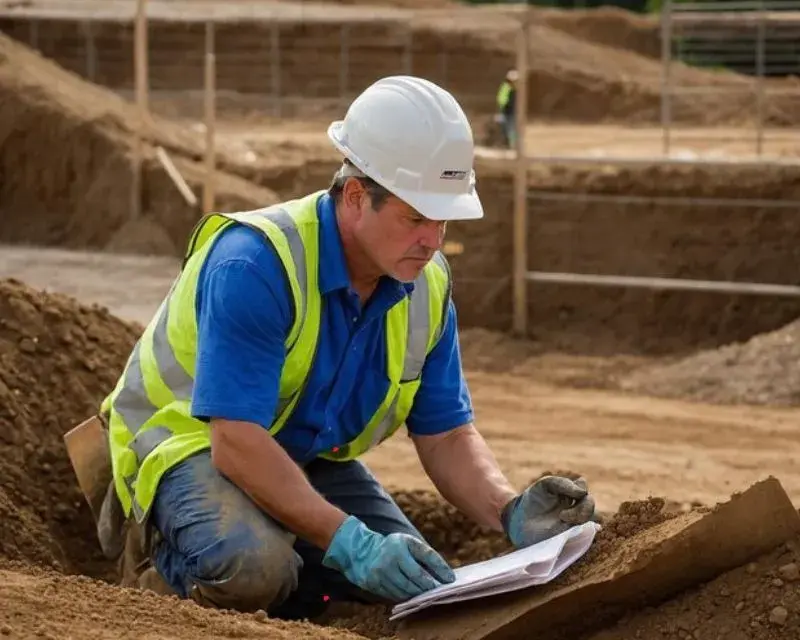Soil composition is critical to civil engineering, affecting construction practices and the overall stability of structures. Different minerals within the soil, along with their physical and chemical properties, play a vital role in informing choices about engineering materials and methods. This overview explores common soil minerals, their impact on construction, soil testing methods, and guidelines for selecting suitable materials for engineering projects.
Key Soil Minerals and Their Impact on Construction
1. Silicate Minerals
- Quartz: A primary component of sand, quartz is highly durable and improves drainage. It’s often used in concrete, asphalt, and as a base for roads due to its strength.
- Feldspar: Found in many soils, feldspar contributes to the formation of clay. Its weathering can produce fine particles that may affect drainage and stability.
2. Clay Minerals
- Kaolinite: Common in many soils, kaolinite has low plasticity, making it suitable for construction. However, it can swell when wet, potentially causing foundation issues if not properly managed.
- Montmorillonite: Known for high plasticity and swelling properties, montmorillonite can complicate construction due to increased potential for movement and changes in volume with moisture fluctuations.
3. Carbonate Minerals
- Calcite: Present in limestone-rich soils, calcite can affect pH and influence chemical reactions that affect soil hardening. Carbonate-rich soils might require specific treatments during construction.
4. Iron and Aluminum Oxides
- These minerals contribute to soil color and fertility. They enhance soil cohesion, which can benefit the structural integrity of foundations. However, high levels can lead to soil compaction challenges.
5. Organic Matter
- Though not a mineral, organic content enhances soil fertility and structure. High organic matter can increase water retention and microbial activity, affecting construction practices, especially in residential projects.
The Importance of Soil Testing
Understanding soil composition requires thorough testing, which informs engineers about its properties and suitability for particular applications. Common soil testing methods include:
1. Visual Inspection and Sampling
Visual examinations provide preliminary insights into soil texture, color, and composition. Sampling involves extracting soil samples from different depths for further analysis.
2. Grain Size Analysis
This determines the distribution of different particle sizes in soil. Techniques include:
- Sieve Analysis: For coarse materials (e.g., sand and gravel).
- Hydrometer Method: For finer particles (silt and clay).
3. Atterberg Limits Test
- This test provides information about the plasticity of clay soils by measuring the moisture content at which soils change from solid to plastic and liquid states, indicating potential shrink-swell behavior.
4. Compaction Tests
- These tests, such as the Standard Proctor and Modified Proctor tests, measure soil density and moisture content at optimal compaction levels, providing insights into how well soils will support structures.
5. Shear Strength Tests
Understanding the shear strength of soil is important for assessing its load-bearing capacity. Common methods include:
- Direct Shear Test: Measures the force required to slide soil layers past one another.
- Triaxial Test: Evaluates soil strength under different stress conditions, simulating field conditions.
6. Chemical Testing
- Analyzing soil pH, salinity, and nutrient content can inform engineers about potential for corrosion of materials and suitable methods for enhancing soil properties.
Conclusion:
Understanding soil composition is paramount in civil engineering, impacting everything from material selection to construction practices. By examining the types of minerals present, employing precise soil testing methods, and making informed choices about materials, engineers can mitigate risks related to soil behavior and ensure that structures are stable, durable, and sustainable.






